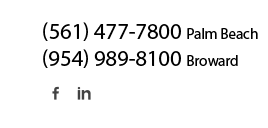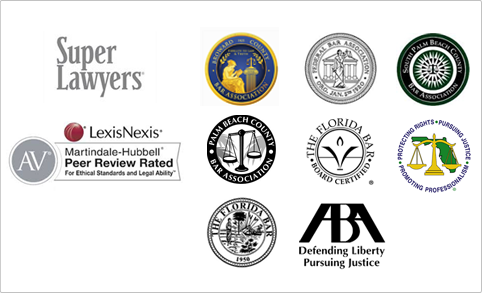



Most, if not all, areas of the United States have now entered the process of opening back up for business after having reckoned with many weeks of governmentally-mandated closures and “safer-at-home” or “stay-at-home” declarations. Along with this re-opening, a variety of liability concerns related to the Covid-19 pandemic necessarily will be confronted by these re-opening businesses. Business owners and employers will face an unprecedented exposure to a “novel” landscape of legal liability arising from their engagement with both patrons and employees. Clients and customers will worry about being exposed to the potentially fatal virus when frequenting a re-opened business and employees who return to work will worry about being exposed to the virus in their workplace. These re-opening business owners are right to fear these claims from their employees and patrons. Why, you ask?
First, while employees may not be able to sue their employers for an injury or debilitating illness sustained at the workplace, by statute most employees are covered under an employer’s workers’ compensation insurance policy which provides compensation and medical benefits to workers who are injured or become ill while at work. Even though these claims may be potentially covered by insurance, workers’ compensation claims can prove very costly for employers in the form of substantially higher premiums, continued payment of wages during the recovery period and a slew of other direct and indirect costs. Moreover, an employee is not required to prove fault on the part of an employer to be eligible for workers’ compensation benefits, only that injury or illness occurred while on the job. And while one might think that getting a workers’ compensation claim approved based on contracting Covid-19 would prove to be a daunting task, the failure of an employer to rigorously implement and adhere to the governmental guidance could far more easily subject a re-opening business to such workers’ compensation liability.
The Occupational Safety and Health Administration (OSHA), which requires employers to establish a workplace that’s “free from recognized hazards that are causing or are likely to cause death or serious physical harm” to employees, has issued guidance directing re-opening businesses to follow the labyrinth of complex guidelines promulgated by the Centers for Disease Control and Prevention (CDC) which are applicable to workers in office buildings who are at risk for exposure to the virus that causes Covid-19, recognizing that “[o]ffice building employers, building owners and managers, and building operations specialists can take steps to create a safe and healthy workplace and protect workers and clients.” These extraordinary measures, if properly followed, should at the very least include EACH of the following undertakings:
An employer’s failure to rigorously implement and adhere to this rather specific set of guidelines following re-opening would be an open invitation to any employee who contracts Covid-19 upon returning to work to file a workers’ compensation claim against their employer, and any nonchalance by an employer in its approach to this vast array of guidelines could be easily exploited by an employee who tests positive for Covid-19 after returning to work upon a businesses’ re-opening. Perhaps the most readily observable and notable failure on the part of an employer potentially giving rise to liability would be as to the darning of masks or face coverings, since all it would require is a snapshot or two to establish non-compliance and it truly is a technically bereft criterion to implement as compared to so many of the others. In other words, an employer’s “bang for the buck” in reducing its legal exposure by requiring that masks be worn and faces be covered is quite high. Conversely, the liability exposure would likely be quite high for any employer who fails to ensure that this easily tasked guideline is routinely followed.
Additionally, beyond the liability to a business from its employees, patrons who test positive for Covid-19 after visiting a business may be able to pursue a claim for monetary damages against a re-opening business by filing of a personal injury lawsuit. If a patron feels that the business was negligent by failing to adequately implement and adhere to the foregoing guidelines, and thus having known about the potential risk of harm to them presented by Covid-19 failed to take reasonable measures to prevent that harm from occurring to them, such a lawsuit may be well-founded and meritorious. While it may be true that there is some assumption of the risk associated with venturing out during this pandemic, a place of business cannot ignore following the governmental guidance published by the CDC with impunity and expect to remain immune from liability to its patrons on that basis. And because there is some issue at the present time as to whether or not viruses are excluded from coverage under both casualty and general liability insurance policies, a re-opening business could very well find itself in the position of having to hire and pay its own lawyer and to provide for its own defense in the event such a lawsuit is brought before the courts start to weigh in on the multitude of coverage claims which will invariably arise from the Covid-19 pandemic.

Boca Raton
7777 Glades Road
Suite 400
Boca Raton, Florida 33434
Phone (561) 477-7800
Fax (561) 477-7722
Contact Us
Client Portal
Terms and Conditions
Privacy Policy
Web Accessibility
Contacting Shapiro, Blasi, Wasserman & Hermann, P.A. or any individual Shapiro, Blasi, Wasserman & Hermann, P.A. attorney or employee via the internet does not create an attorney-client relationship without our prior written agreement.
Please do not send us any information you regard as confidential unless and until we have agreed to a formal attorney-client relationship.
Information conveyed prior to establishing an attorney-client relationship is not privileged or confidential.
You should also be aware that information you convey to Shapiro, Blasi, Wasserman & Hermann, P.A. via the Internet may not be secure.
Copyright 2025 Shapiro, Blasi, Wasserman & Hermann, P.A. All Rights Reserved
Shapiro, Blasi, Wasserman & Hermann, P.A., with offices located in Boca Raton, Florida, is a full service law firm with practice areas including Commercial Litigation; Labor and Employment; Product Liability; Construction Litigation; Real Estate Transactions and Litigation; Business Transactions and Litigation; Family Law; Wills, Trusts and Estates; Healthcare; ADA Public Access Claims and Compliance; Bankruptcy and Creditor's Rights; Probate, Trust and Fiduciary Litigation; and Appellate Matters. We represent clients throughout Florida and nationwide.
We are a debt relief agency. We help people file for bankruptcy relief under the Bankruptcy Code.
Please review the privacy policy along with the terms and conditions of our site. Web Development by IWD Marketing